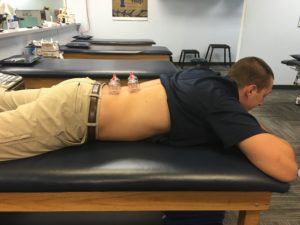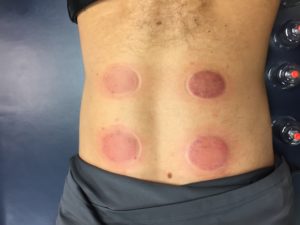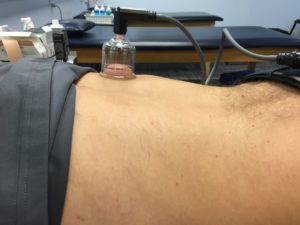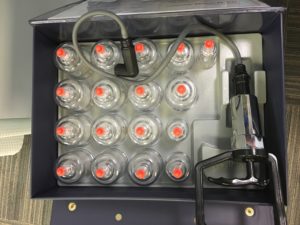New Treatment or Old Remedy: Is this your ‘cup’ of tea??
For anyone who watched the Rio Olympics, it was hard to miss those conspicuous circular spots displayed by many of the athletes, most notably Michael Phelps. So what exactly are those marks on the back and shoulders of the most decorated Olympian of all-time? They are from a technique called cupping, which has roots in ancient Chinese medicine, but has gained popularity in the 21st century.
The History
Cupping has been used by many ancient cultures to treat a wide variety of ailments, from back pain and arthritis to indigestion, infectious diseases and more. In Chinese medicine, heated glass or bamboo cups are placed on the skin to create a negative pressure effect and draw the skin up into the cup. In traditional cupping, the cups are placed over uniform landmarks or meridians in a similar fashion to acupuncture. The modern cupping technique of the western hemisphere is used to treat musculoskeletal conditions by improving circulation and soft tissue mobility.
How We Use Cupping
- As physical therapists, we use cupping to treat musculoskeletal pain and dysfunction.
- Oftentimes with musculoskeletal dysfunction, soft tissue mobility becomes impaired.
- Cupping can be viewed as a reset button over specific muscles to decrease pain and improve soft tissue mobility by encouraging blood flow.
- As with any treatment technique, cupping is only one of many therapeutic procedures that can be used to treat musculoskeletal conditions.
What to Expect
- We use a plastic cup with a vacuum seal to create the negative pressure inside the cup, which lifts the soft tissues.
- The size of the area being treated and the degree of muscular dysfunction helps determine the amount of cups used during the procedure.

- Each cup will be placed on the skin for about 5 min before being removed.
- The procedure is normally pain-free, however, the increased pressure causes a surge in blood flow under the skin, creating a circular red mark. These marks are not painful, but they may be visible for several days to weeks.

- Some patients have immediate decrease in pain after the treatment, though others may take a day or two before they notice a difference.
If your therapist determines that you may benefit from cupping therapy, the cupping treatment will be used as an adjunct to other, evidence-based treatment in order to help you reach your goals. At the Sports Rehab Center, we not only aim to decrease your pain, but we also target the underlying pathology behind your pain in an effort to prevent it from reoccurring. Along with an individualized exercise prescription, cupping and other techniques may be used to help you return to an optimal level of function and performance.
References:
- Kim, J. I., Lee, M. S., Lee, D. H., Boddy, K., & Ernst, E. (January 01, 2011). Cupping for treating pain: a systematic review. Evidence-based Complementary and Alternative Medicine : Ecam, 2011.
- Markowski, A., Sanford, S., Pikowski, J., Fauvell, D., Cimino, D., & Caplan, S. (January 01, 2014). A pilot study analyzing the effects of Chinese cupping as an adjunct treatment for patients with subacute low back pain on relieving pain, improving range of motion, and improving function. Journal of Alternative and Complementary Medicine (new York, N.y.), 20, 2, 113-7.
- Rozenfeld, E., & Kalichman, L. (January 01, 2016). New is the well-forgotten old: The use of dry cupping in musculoskeletal medicine. Journal of Bodywork & Movement Therapies, 20, 1, 173-178.
- Yoo, S. S., & Tausk, F. (January 01, 2004). Cupping: East meets West. International Journal of Dermatology, 43, 9, 664-5.


